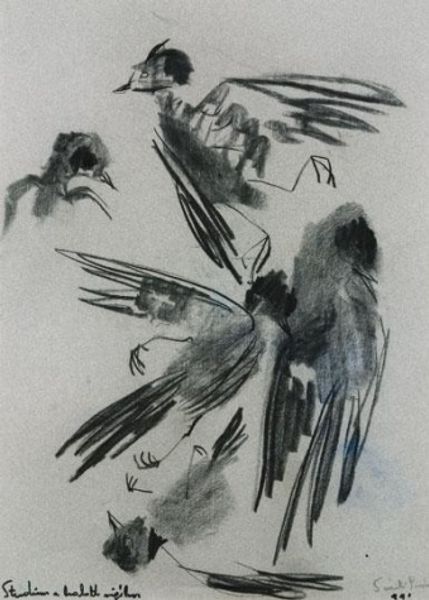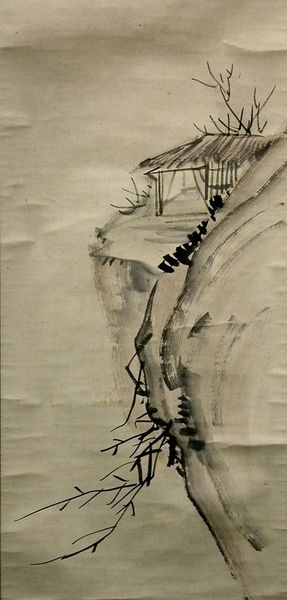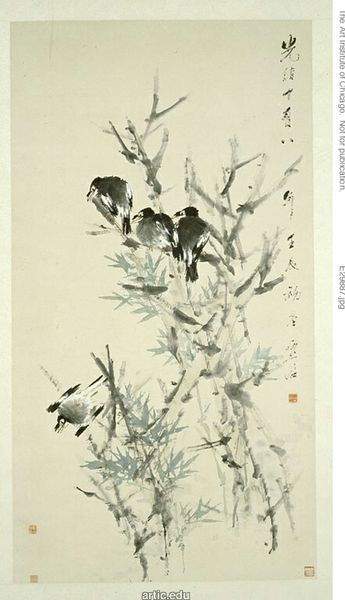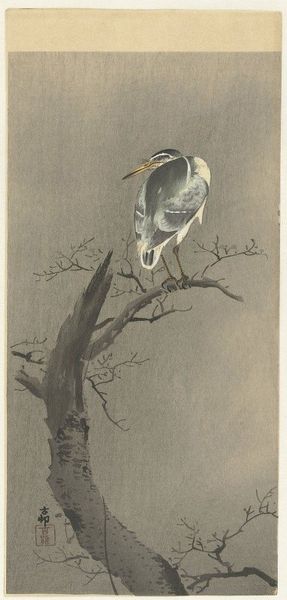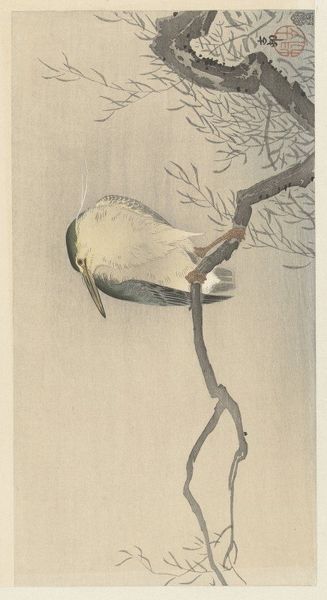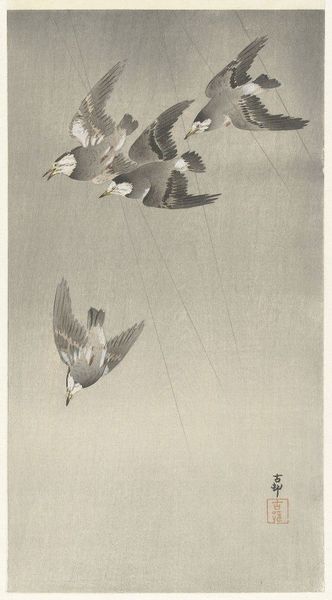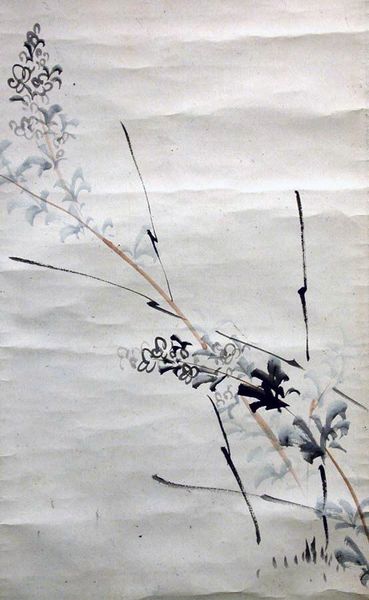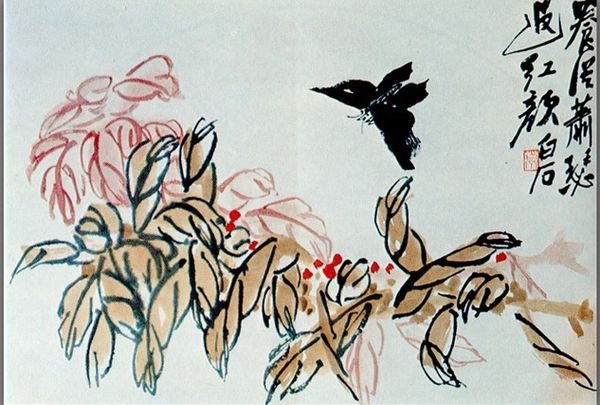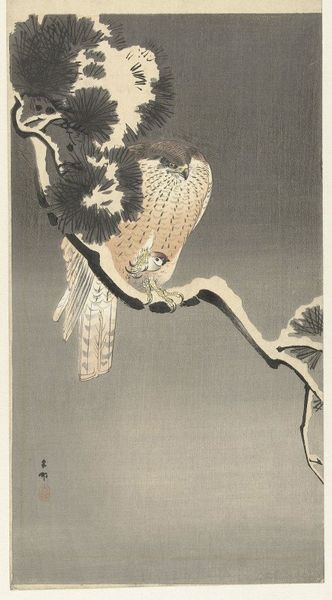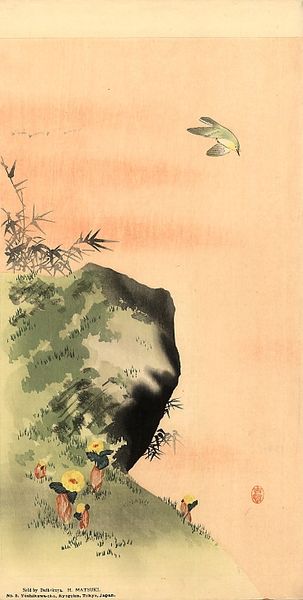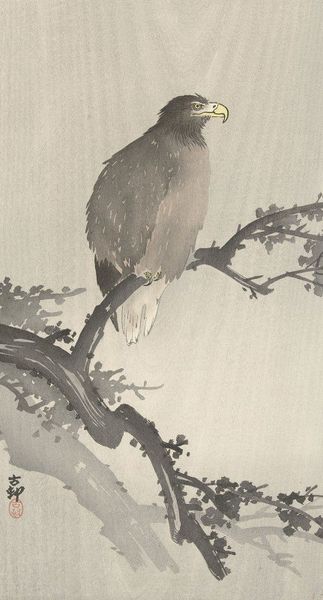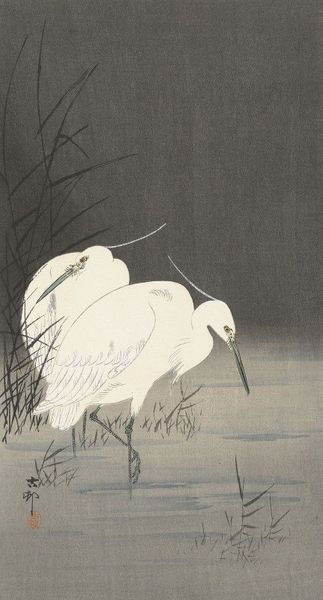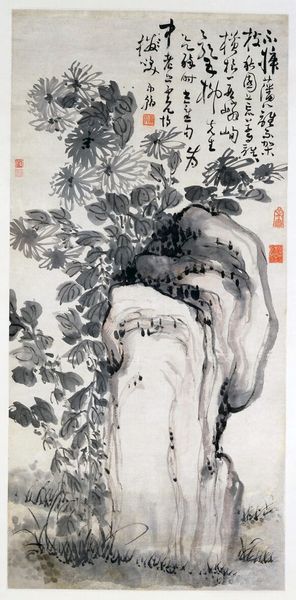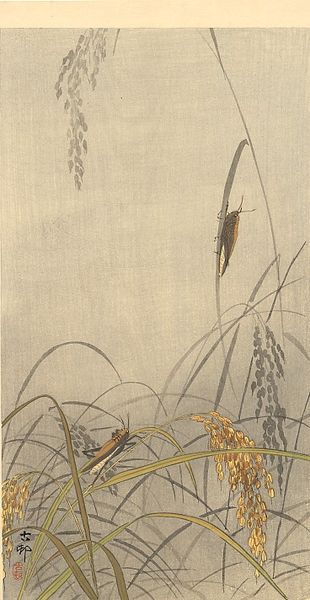
ink
#
portrait
#
asian-art
#
japan
#
ink
#
calligraphy
Dimensions: 38 1/4 x 11 7/8 in. (97.2 x 30.2 cm)
Copyright: Public Domain
Editor: We’re looking at “Hakuzosu the Fox-Spirit,” an ink drawing from between 1800 and 1868 by Ōtagaki Rengetsu. The figure, rendered in monochrome ink, has a solemn presence. What underlying social narratives do you see embedded in this artwork? Curator: This is a fascinating example of Rengetsu's exploration of folklore. The fox spirit, or kitsune, in Japanese culture is often depicted as a shapeshifter, a figure that transcends boundaries. We have to ask, what kind of boundaries is Rengetsu challenging here? Is it societal expectations, gender roles, or perhaps even spiritual limitations? Editor: That's a great point. So, the image might be interpreted as a subtle form of rebellion or questioning the established order of things during that period? Curator: Precisely. Rengetsu was a Buddhist nun, poet, and artist, existing within a complex web of societal expectations. The fox spirit can also be read as an ambiguous, liminal figure, existing on the periphery of conventional morality, maybe embodying a critique of rigid social structures and an embrace of fluid identity. Editor: What I’m taking away from this is that this serene image contains a rich blend of cultural context and subtle social commentary, challenging viewers to consider diverse viewpoints. Curator: And perhaps to reflect on our own fixations with clear-cut identities and social boundaries. Art like this invites us to consider different perspectives. Editor: It’s powerful how this one figure is both peaceful and provocative.
Comments
No comments
Be the first to comment and join the conversation on the ultimate creative platform.
